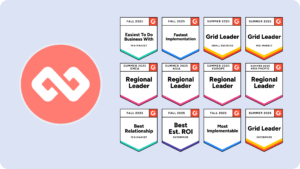Through our discussions with organisations, NFPs, and universities one thing has always been clear – you don’t have to sell the benefits of mentoring. It seems that the overwhelming majority of people believe that mentoring is a worthwhile exercise and the demand for mentoring is continuously increasing. Yet many still don’t ‘officially’ have a program in place.
As organisations focus time, effort, and money on implementing other ‘new-age’ training and development initiatives, the reality is that these programs are often viewed with an element of scepticism from potential participants. Employees these days have a high “BS” radar!

On the flip side, a formal mentoring program – run with mentoring software – can be implemented with minimal expense, effort, and resources and you can be sure it will be supported internally by employees and the big bosses.
In a recent UK survey conducted by HR services group Penna, they found that approximately 40% of employees had never been given the opportunity to be a mentor or mentee, yet more than a fifth of employees yearn to be one.
While 96% of Fortune 100 companies have mentoring programs, and 75% of executives believe mentoring played a key role in their success, it still appears that organisations aren’t realising the full opportunity of offering mentoring to a wider section of their organisation. Mentoring is not only of value to your identified ‘stars’ but what about your potential ‘stars’?
As we look to increase engagement, innovation and productivity within our workplaces, organisations should consider mentoring as a way to break down the old-school hierarchy and improve connectivity through the facilitation of tangible and meaningful relationships.
With the increasing demand for mentoring, it’s time to consider how we can address these disparities, extend mentoring opportunities equally, and ensure that everyone has the chance to benefit from mentoring relationships.
Mentoring: Who Is Missing Out?
While many organizations recognize the value of mentoring, there are still those who are excluded from these opportunities. This can be due to various reasons, including geographical location, industry sector, or even discrimination based on gender, race, ethnicity, or socioeconomic status. When certain individuals or groups don’t have the same access to mentoring as others, it not only limits their potential for personal and professional growth but also perpetuates existing disparities in the workforce and society. Thus, it is essential to understand who is missing out on these opportunities and why.
Remote Workers
With the growing popularity of telecommuting and hybrid work, employees working from home or in satellite locations may lack access to the same support networks and resources as those in more centralized locations. This can make it challenging to create meaningful connections with mentors who are experienced in their field and can provide valuable guidance.
Underrepresented & Minority Groups
This can include people of color, LGBTQ+ individuals, and those from lower socioeconomic backgrounds. These individuals may face additional barriers to entering and advancing in their chosen fields, and mentorship can be a crucial tool for overcoming these obstacles. However, if mentorship programs are not intentionally designed to include and support individuals from these backgrounds, they may not be able to fully benefit from them.

Discover how Women Offshore used mentoring to support women+ working in the very male-dominated offshore industry.
The Unequal Availability of Mentoring Opportunities
The lack of equal access to mentorship programs isn’t just a matter of limited resources or underestimating the importance of mentoring; it is also a significant contributing factor to persisting disparities in career advancement and professional development. When certain groups do not have the same access to mentors as others, the potential benefits of a mentor-mentee relationship are lost, including increased self-confidence, skill development, networking opportunities, and career guidance. This unequal availability hampers not only the individual’s growth but also the growth of the organization or workplace, as diverse perspectives and experiences contribute to innovation and success.
It’s crucial to explore the root causes behind the unequal access to mentoring opportunities to develop effective strategies for closing the gap. First and foremost, organizations and companies must assess the diverse needs of their workforce and create mentorship programs that cater to those unique requirements. Fortunately, there is growing awareness of the unequal availability of mentoring opportunities and the need for action.
Despite the awareness, there are still significant challenges to achieving equality in mentoring opportunities. One major obstacle is the lack of awareness and understanding of the benefits of mentorship among underrepresented groups. The demand for mentoring, while prevalent in general, might not be as strong in these groups as they may not realize the potential advantages of having a mentor or may feel hesitant to seek out mentorship opportunities due to a lack of confidence or fear of rejection. Raising awareness about the benefits of mentoring, such as improved job satisfaction, enhanced leadership skills, and increased chances of career advancement, can help drive change, increase demand for mentoring among these groups, and create more equitable access to mentoring opportunities.
Another barrier to equal access to mentorship is the prevalence of unconscious bias in the workplace and society at large. This bias can manifest in many ways, such as assumptions about an individual’s abilities or potential based on their gender, race, or socioeconomic background. These biases can lead to certain individuals being overlooked for mentorship opportunities. This can also lead to situations where the effort to address their demand for mentoring leads to them being paired with mentors who may not fully understand their unique challenges and experiences.
Breaking Down Barriers to Mentoring
There are several steps that companies and organizations can take to break down barriers to mentoring and ensure that everyone has access to these valuable resources. One approach is to create mentorship programs that are specifically designed to support individuals from underrepresented backgrounds. This can involve partnering with community organizations and professional associations to identify potential mentees and mentors, providing training and resources to support the mentoring relationship, and offering ongoing support to ensure that the program is effective. (More on this later)
Another approach is to leverage technology to connect remote workers with mentors. This can involve using video conferencing tools to facilitate virtual mentorship meetings, creating online forums where mentors and mentees can connect and share resources, and providing access to online training and development resources. This can also come in the form of building a formal mentoring program with the help of mentoring software like Mentorloop. By using technology to overcome geographical barriers, organizations can ensure that all employees have access to the same opportunities for growth and development.
Finally, it’s essential to create a culture of mentoring within organizations. This can involve encouraging managers and leaders to serve as mentors, providing training and resources to support effective mentorship relationships, and recognizing and rewarding employees who participate in mentoring programs. By making mentorship a core part of the organizational culture, not only will organizations be addressing the demand for mentoring itself, but it can also ensure that everyone has access to the support and guidance they need to succeed.
Achieving Equality in Mentoring Opportunities
To ensure that everyone has access to mentoring, companies and organizations need to take concrete steps to create inclusive, accessible mentorship programs. This involves identifying and addressing barriers to participation, developing targeted strategies, and committing resources to promote diversity and inclusion. Some possible approaches to achieve this include:
- Establishing formal mentoring programs within organizations, specifically designed to promote inclusion and target underrepresented groups.
- Partnerships between organizations and mentorship-based professional associations to improve access to mentorship for various communities, such as people of color, women, and individuals from lower socio-economic backgrounds.
- Expanding remote or virtual mentoring opportunities so that regardless of location, individuals have access to valuable support and guidance.
- Promoting a culture of visibility, where organizations actively showcase the benefits of mentoring and encourage a mindset of continual learning and development.
Taking these steps to promote equal access to mentoring opportunities is not only a worthy goal for organizations and companies; it is also an investment in their own long-term success. By ensuring mentoring opportunities for all, organizations are fostering a diverse workforce capable of meeting the challenges of the future and remaining competitive in an ever-evolving global market.
It’s important to note that achieving equality in mentoring opportunities is not a one-time fix, but an ongoing process that requires continued commitment and effort. Companies and organizations must regularly evaluate their mentorship programs to ensure they are meeting the needs of all individuals and making progress towards their inclusion goals. By doing so, they can create a culture of diversity and inclusion that benefits everyone involved.
The Role of Technology in Providing Equitable Mentoring Opportunities
We all know that technology plays a huge part in connecting people and bringing access and information to those who wouldn’t otherwise have them due to various circumstances. This is definitely the case as well when it comes to mentoring. Engaging the help of mentoring software to run a mentoring program helps you in ways that go beyond easing the burden of the admin work required.
Access
For mentoring programs to be equitable, they first have to be accessible to all. And while having a formal program already gets you part of the way there, it doesn’t necessarily address the different needs within your organization or cohort. Remote and hybrid workers, those with disabilities, or even those that may have more introverted personalities may be left out with a program that requires face-to-face interaction in a set location (e.g. an office). With mentoring software, whatever geographical hurdles there are can be overcome. Participants will be able to sign up and find their life changing connections with little to no hassle and from a place that’s convenient and comfortable for them.
Asynchronous Mentoring
Sometimes, time can also be a hindrance to mentoring. Differing time zones, working schedules, and lifestyles can be issues for mentoring pairs who otherwise would be great matches. With the help of mentoring software and its integrations, mentors and mentees can participate in mentoring asynchronously – at times that are convenient and make sense for their schedules and lifestyles.
Matching
Matching is one of the most crucial elements of a mentoring program. Often, even with the best intentions, matching mistakes can be made by program coordinators, in part due to unconscious bias. Matching using a mentoring software’s algorithm helps remove these unconscious biases that humans have. An algorithm won’t match people based on perceived ability or an assessment of personality. It will use data that’s relevant to the participants and a mentoring program’s goals, giving everyone a better chance of benefitting from the program and the pairing.
Mentoring Quality
When a program is ran manually, it’s hard to measure. You could get some numbers going if you have the time and patience to do it manually, of course. But what you’re really missing here is a solid measure of how mentors and mentees feel about their mentoring relationships and whether they feel they’re growing within these relationships or not. Mentoring software like Mentorloop will have a system to gather this feedback and show program coordinators issues in a timely manner so they can be addressed. Software also makes reporting on a mentoring program easy. With tools like Mentorloop, you can easily and confidently share your success with your key stakeholders, participants, and colleagues.
Closing the Gap: Making Mentoring Available to Everyone
By recognizing the disparities that exist in access to mentorship and taking active steps to address them, we can help ensure that everyone has the opportunity to develop valuable relationships with experienced mentors, unlock their full potential, and contribute to a more diverse and inclusive world. The demand for mentoring is there, organizations just need to take proactive steps to make mentoring accessible for all.
When organizations prioritize diversity and inclusion, they create an environment where everyone feels valued and supported, and where individuals from all backgrounds can thrive. This, in turn, can lead to more opportunities for mentorship and professional development, as well as greater innovation and success for the organization as a whole.
Ultimately, making mentorship available to everyone is not just about providing individuals with the tools they need to succeed. It is also about creating a more equitable and just society, where everyone has the opportunity to reach their full potential and contribute to the greater good. By working together to close the gap in access to mentorship, we can help create a brighter future for all.
Keen to make a difference in your organisation with a mentoring program? Speak with one of our mentoring specialists




